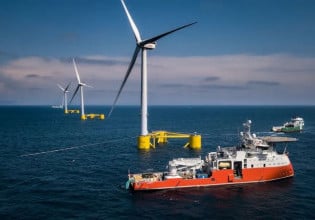Molecular Sieve for Hydrogen Tanks Increases Storage Capacity up to 4X
One of the primary obstacles for hydrogen fuel burning vehicles and hydrogen fuel cell cars has been the size, complexity, and expense of the hydrogen fuel storage systems. An international team of researchers, led by professor David Antonelli of Lancaster University, has found a new material that may provide a solution.
The material made from manganese hydride would be used to make molecular sieves within fuel tanks which store the hydrogen and function alongside fuel cells in a hydrogen-powered system.
The researchers claim that the material, called KMH-1 (Kubas Manganese Hydride-1), would enable the design of hydrogen fuel systems including the tank and the fuel cell that are much smaller, more convenient, cheaper, and energy dense than existing hydrogen fuel technologies, and they would be able to out-perform battery-powered vehicles.
"The cost of manufacturing our material is so low, and the energy density it can store is so much higher than a lithium-ion battery, that we could see hydrogen fuel cell systems that cost five times less than lithium-ion batteries as well as providing a much longer range - potentially enabling journeys up to around four or five times longer between fill-ups," professor Antonelli, Chair in Physical Chemistry at Lancaster University who has researched this area for over 15 years, said.
The material uses a chemical process called Kubas binding that enables the storage of hydrogen via the distancing the hydrogen atoms within an H2 molecule. It works at room temperature. This method eliminates the need to split, and bind, the bonds between atoms, a process that requires high energies, extreme temperatures, and complex equipment.
The KMH-1 material absorbs and stores any excess energy so external heat and cooling are not required. This excess energy absorption is critical because it eliminates the need for cooling and heating equipment, resulting in systems that could be made far more efficient than existing designs.
The sieve absorbs hydrogen under about 120 atmospheres of pressure, which is less pressure than a standard scuba tank. Then, when the pressure is released, it releases hydrogen from the tank into the fuel cell. This is much lower pressure than conventional hydrogen tanks which are at about 700 atmospheres of pressure. (See image above of Hyundai NEXO Hydrogen Fuel Cell with tank at 700 bar pressure).
The researchers' tests revealed that the material could enable the storage of as much as four times the hydrogen in the same volume as existing hydrogen fuel technologies.
This storage capability would give vehicle manufacturers the flexibility to create vehicles with increased range, or allow them to reduce the hydrogen tank sizes by up to a factor of four.
Although vehicles such as cars and heavy goods delivery vehicles are the most obvious application, the researchers believe the technology has many other applications.
"This material can also be used in portable devices such as drones or within mobile chargers so people could go on week-long camping trips without having to recharge their devices," said Professor Antonelli. "The real advantage this brings is in situations where you anticipate being off-grid for long periods of time, such as long haul truck journeys, drones, and robotics. It could also be used to run a house or a remote neighborhood off a fuel cell."
The University of South Wales licensed the technology to a spin-out company part-owned by Professor Antonelli, called Kubagen.
The team detailed the research in the paper titled, "A Manganese Hydride Molecular Sieve for Practical Hydrogen" and was published by the academic journal Energy and Environmental Science.
The material demonstrated a reversible excess adsorption of 10.5 wt% and 197kgH2m3 at 120 bar at ambient temperature without any loss of activity after 54 cycles.
Funding for the research came from the University of South Wales, the University of Manchester, Chrysler (FCA), Hydro-Quebec Research Institute, the Engineering and Physical Sciences Research Council (EPSRC), and the Welsh Government.
"Hydrogen storage poses a formidable challenge. For nearly 15 years, we have collaborated with Professor Antonelli and numerous academia and government funding agencies, and we are proud of the result. The development of the KMH-1 material shows genuine promise," Tarek Abel-Baset, Senior Technical Engineer-Advanced Development Engineering at FCA US, said.
Reference Material
Morris, L., Hales, J. J., Trudeau, M. L., et al. (January 2019). A Manganese Hydride Molecular Sieve for Practical Hydrogen Storage under Ambient Conditions. Energy & Environmental Science. DOI: 10.1039/c8ee02499e






